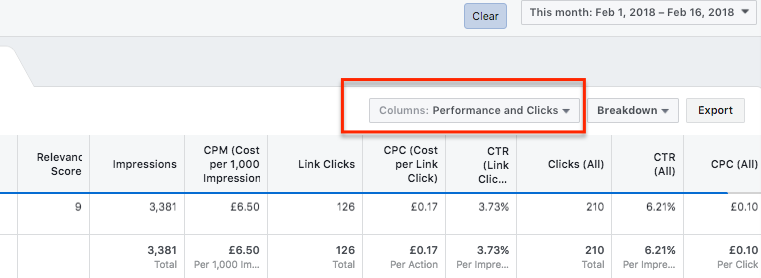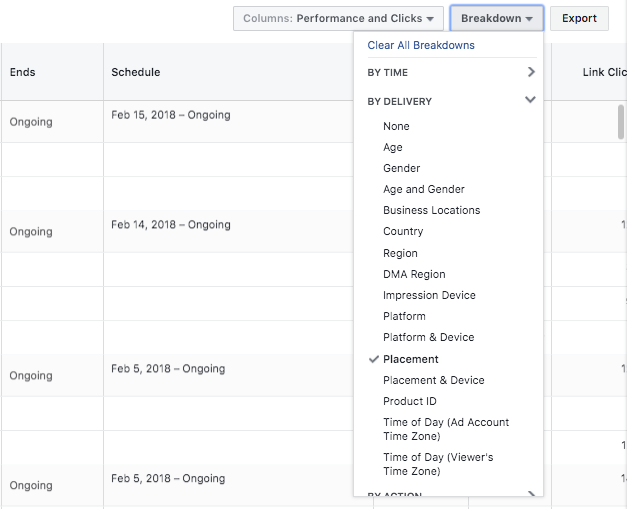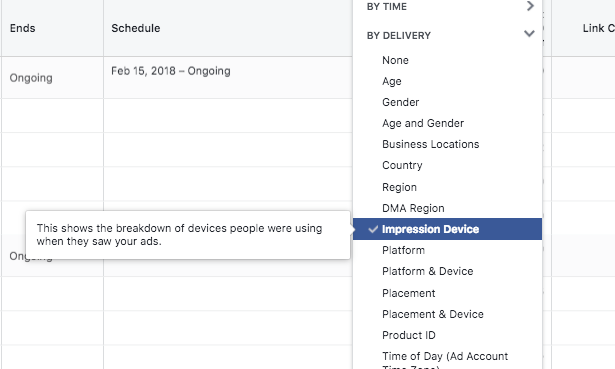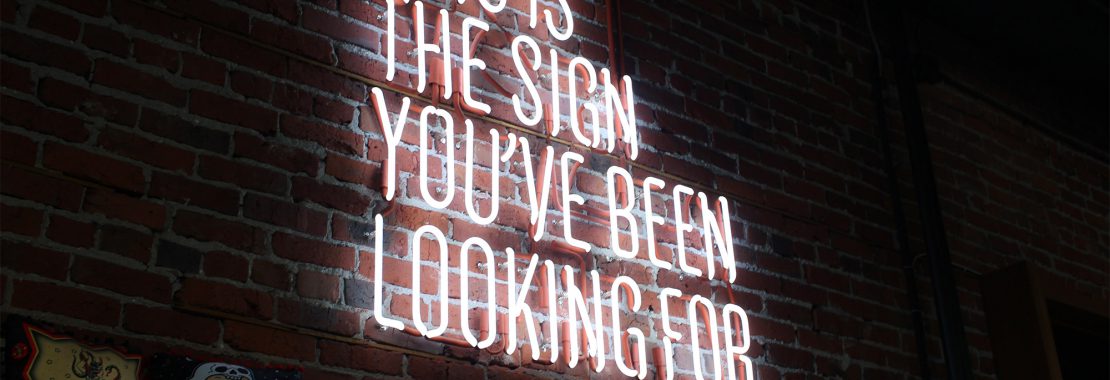Campaigns rarely work perfectly out of the blocks. Being able to make informed decisions on what to optimise at what time is the deciding factor between success and failure. Knowing all the latest Facebook features and ad formats is great, but having a clearly defined process for getting campaigns back from the brink is a must have.
The well-known scenario is this; you set your new campaigns live, check back on performance and whilst you have a few conversions coming through, your CPA (cost per acquisition / sale / conversion) is way too high.
You’re then left thinking – “now what?”. Your reaction to this question, and the process you follow thereafter is probably the most critical part of running Facebook ads. Whilst every situation will vary, I believe there are common avenues to investigate and test before you throw the towel in and give up on the campaign.
That’s what this post is all about, but to run through this process we’ll first assume that:
- Your product is not terrible
- You’ve got a good enough standard of creative
- There are no major blocks to conversions (i.e other channels are converting fine)
- Your tracking is set up properly and you’re looking at correct data
With the above taken care of, let’s run through our preferred next steps when we don’t get the results we want.
Check for signs your creative isn’t resonating
In a similar sense to having a bad product, having the wrong creative or messaging is never going to get the results you need.
As such, one of your first ports of call is to look for signs that you might not be hitting the right spot with your creative. To do this, I recommend starting by reviewing your live ads with the ‘Performance and Clicks’ breakdown report:

Clear signs that your ads are not working are high cpcs, low relevance scores and low CTR’s (link clicks). If these are under what you’re expecting to see, then you know there’s some work to be done here. If you’re not sure what to expect, check out the AdStage benchmark report here.
Action: if the figures mentioned above are really low, you’re going to need to try something completely different. I recommend going for the complete opposite of what you currently have running; think long copy vs. short copy, or image of product vs. lifestyle imagery.
Of course, it’s also well worth trying different ad formats such as a carousel ad in place of a single image ad and so on.
What you’re looking to see is if your new ads improve the aforementioned metrics. If so, you know you’re headed in the right direction.
Check your ad set frequency
This might sound unexpected for a new ad account or ad set, but sometimes frequency can get very high very quickly. Frequency is the number of times on average people in your audience have seen your ads, so anything over 2 and you know you’re starting to go a bit too hard.
The usual cause here is that you’re overspending on an audience that’s too small. To check if you’re doing this, take a look at the audience size vs. estimated daily reach within the ad set in question:

But what if you’re targeting a large audience and your frequency is already really high? Check for impressions vs. reach. If you’ve got a really high impression count vs. low reach relative to your audience size, you know something has gone skewiff with Facebook’s delivery.
Action: if you determine that your audiences are too small, then you either need to turn down the spend or you need to investigate some larger audiences.
This is a classic issue with retargeting ad sets. Because the CPA’s usually look so good, the temptation is to turn the spend up, but if the audience size is still relatively small doing so is going to be risky.
If you’re noticing over-delivery to a smaller portion of your audience, try changing the ad set optimisation away from ‘conversions’ to something like ‘link clicks’ or ‘landing page views’. This should encourage Facebook to deliver the ads to more people in your audience.
Check ad set spend vs. conversions
Even with prior experience of a sector, you never really know 100% which audiences and ad sets are going to work best. After about a week of running (depending on spend), and with early conversions coming through, you should start to see some patterns emerging.
This sounds obvious, but you’ve got to exercise a bit of caution here and not make drastic changes too quickly. To know if you’re ready to make a call on an ad set, make sure you’ve reach statistical significance by using this handy calculator from KissMetics (H/T Nick Boyce!)

It can be quite amazing when looking at the differences in performance between ads sets. You’ll often see a handful picking up all the conversions, with others either not converting at all or having extremely high CPA’s. This is Facebook at it’s confusing best.
Action: Once patterns emerge and you’re confident you’ve reached a level of statistical significance, start to dial spend back on lower performing ad sets and increase the better performing ones.
Before you give up on an ad set though, make sure you’ve gone through the first step and done your best to make sure you have the right creative running. Also, this shows why you need to have multiple ad sets running at once. Without doing that, you’ll never know.
Are you overspending on the wrong placement?
Not all placements are equal. As with changes in creative and audiences, the differences between newsfeed placements, right-hand side, messenger, Instagram and so on can be huge.
One of the biggest mistakes you can make is to lump everything into one ad set, which in most cases only happens because every placement is selected as default. If you do this, you will more than likely be wasting money on placements that aren’t delivering results.
To get to the bottom of this, use the ‘Placement’ and ‘Platform’ dropdown options in the Breakdown reports to show you how you spend compares against performance on each:

Action: first check your ad sets to see which placements and platforms you’re currently running on. If you’ve gone with the default option of ‘Automatic Placements’ then you’ll be running across everything Facebook can find for you.
Once you’ve figured out how much you are spending on each placement vs. what you’re getting back, close placements off that are not generating a positive return. If you find multiple placements / platforms are generating results, break them out into separate ad sets and optimise accordingly.
If you’re not sure what to go for in the first place, a sound piece of advice is to stick with the newsfeed placements only. That’s usually the best place to benchmark performance and get things rolling.
Are you overspending on the wrong device?
This is very similar to the point above. Quite often, performance will differ greatly between devices. Again, the default setting (and Facebook’s “advised” setting) is to target people on both mobile & desktop within the same ad set. I’d disagree.
This isn’t necessarily always going to end badly for you, but you need to know how to check which device is working out best for you. To do this, simply select the ‘device’ option in the breakdown menu to get a mobile vs. desktop report:

Action: If one device is dramatically different to the other, simply switch off delivery for the lowest performer. If performance is similar and your audiences are large enough, split mobile and desktop out into separate ad sets.
Word of warning here; we’ve actually seen this have a negative effect on performance when audiences are relatively small. A classic case of best practice not always being best, so always double check performance and monitor the right figures before making a call.
These are just a handful of things you can look at if your campaigns are not going the way you want them to. If you’re struggling to know what to do, trying the above should at least be a good place to start.
With so many data points to look at and monitor – what do you do when your campaigns are not working?



